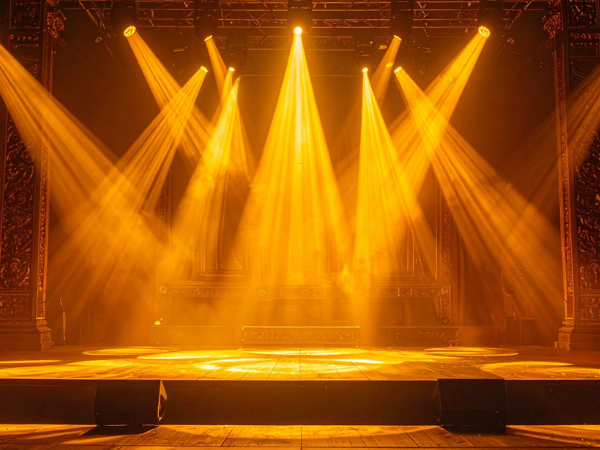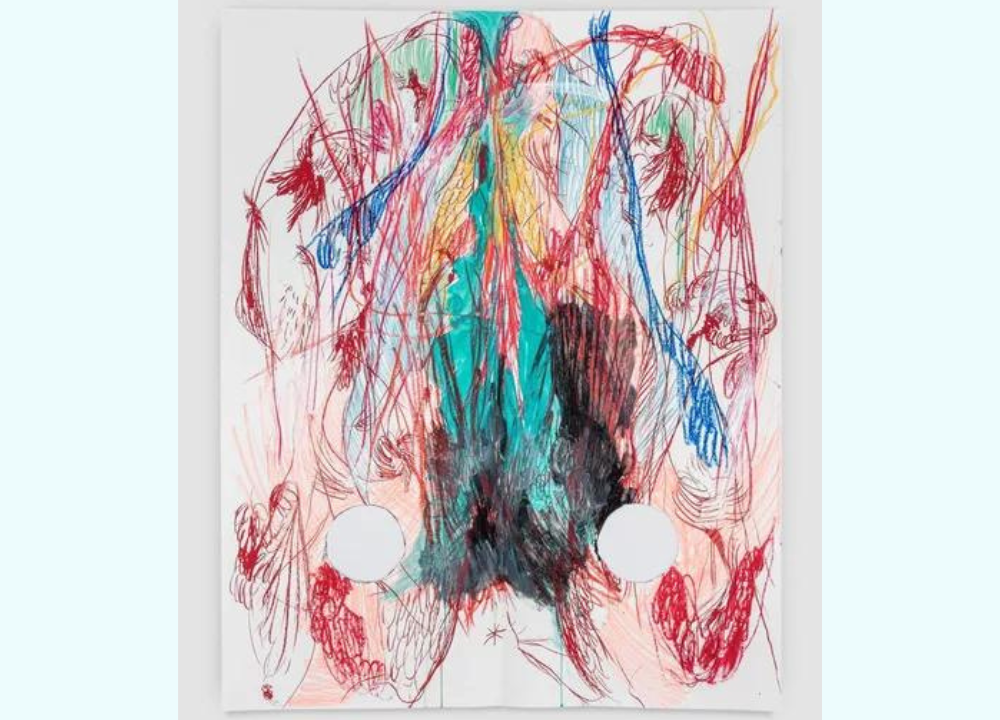The right light can change your mood, sharpen your focus, and unlock new ways of thinking. You’ll discover simple yet powerful ways to use lighting that will transform your creative space and help your ideas shine brighter than ever before.
Impact Of Lighting On Creativity
The right lighting plays a crucial role in boosting creativity. It affects how we think, feel, and perform creative tasks. Proper light settings can either inspire new ideas or cause fatigue and distraction.
How Light Influences Mood
Light directly affects our mood, which in turn impacts creativity. Bright, natural light often lifts spirits and energizes the mind. Dim or harsh lighting can cause stress, sadness, or tiredness, blocking creative thoughts.
Here are key ways light changes mood:
- Natural light improves happiness and focus.
- Warm light creates comfort and calmness.
- Cool light boosts alertness and sharp thinking.
- Flickering or uneven light can cause irritation and reduce creativity.
Below is a table summarizing light types and mood effects:
| Light Type | Mood Effect | Creative Impact |
|---|---|---|
| Natural Daylight | Positive, Energetic | Enhances idea generation and focus |
| Warm Incandescent | Relaxing, Cozy | Supports reflective and calm creativity |
| Cool Fluorescent | Alert, Clear | Good for detailed and analytical tasks |
| Dim or Flickering | Uncomfortable, Distracting | Reduces creative energy and productivity |
Choosing the right light mood helps keep the mind open and creative energy flowing.
Connection Between Lighting And Brain Function
Light influences brain activity and cognitive functions tied to creativity. Different lighting conditions stimulate various brain areas, affecting thinking and problem-solving skills.
Important ways light impacts brain function include:
- Regulating circadian rhythms: Light controls sleep-wake cycles, which affect mental clarity.
- Boosting alertness: Bright light increases brain arousal, improving attention.
- Enhancing memory: Proper lighting supports memory retention and recall.
- Stimulating neurotransmitters: Light affects chemicals like serotonin that influence mood and creativity.
Brain regions most affected by lighting:
- Prefrontal cortex – involved in planning and creativity
- Hippocampus – key for memory formation
- Retina – sends signals to the brain based on light exposure
Proper lighting supports mental functions, making creative thinking easier and faster.
Types Of Lighting For Creative Spaces
Lighting plays a key role in creative spaces. It affects mood, focus, and the quality of work. Different types of lighting can change how ideas flow and how comfortable a space feels. Choosing the right lighting helps artists, designers, and creators work better and feel inspired.
Natural Light Benefits
Natural light comes from the sun and is the best source for creative workspaces. It offers a balanced spectrum of colors that helps the eyes and brain. Exposure to sunlight improves mood and energy, which boosts creativity. Natural light also helps maintain a healthy sleep cycle by regulating the body’s internal clock.
Advantages of natural light include:
- True color perception: Colors look more accurate under sunlight.
- Reduces eye strain: Soft, even light prevents fatigue.
- Improves focus: Bright, natural light keeps the mind alert.
- Enhances mood: Sunlight increases serotonin, reducing stress.
To maximize natural light, consider these tips:
- Place your workspace near windows.
- Use sheer curtains to soften harsh light.
- Keep windows clean to allow more light in.
- Choose light wall colors to reflect sunlight.
| Benefit | Impact on Creativity |
|---|---|
| Improved Color Accuracy | Helps in choosing and mixing colors better |
| Better Mood | Increases motivation and reduces creative blocks |
| Reduced Fatigue | Allows longer, more comfortable working hours |
Artificial Lighting Options
Artificial lighting fills gaps when natural light is not enough or unavailable. It allows control over brightness and color temperature. Different bulbs and fixtures create various atmospheres and effects. Proper artificial lighting supports creativity during night hours or in windowless rooms.
Common types of artificial lighting include:
- LED lights: Energy-efficient, long-lasting, and adjustable in color.
- Fluorescent lights: Bright but can cause glare or flicker.
- Incandescent bulbs: Warm light, softer but less energy-efficient.
- Task lighting: Focused light for detailed work areas.
Consider these factors when choosing artificial lighting:
- Color temperature (measured in Kelvins) affects mood:
- Warm light (2700K–3000K) creates a cozy feel.
- Neutral light (3500K–4500K) is good for general tasks.
- Cool light (5000K–6500K) mimics daylight and boosts alertness.
- Brightness should match the task to avoid eye strain.
- Adjustability allows customizing lighting for different projects.
| Lighting Type | Best Use | Pros | Cons |
|---|---|---|---|
| LED | General and task lighting | Energy-efficient, adjustable color | Initial cost higher |
| Fluorescent | Bright workspaces | Affordable, bright | Can flicker, harsh light |
| Incandescent | Warm, cozy areas | Soft light, inexpensive | Consumes more energy, short lifespan |
| Task Lighting | Focused work | Increases precision | Limited coverage area |
Combining Light Sources
Using both natural and artificial light creates a balanced environment. Combining light sources allows control over brightness and color throughout the day. This mix improves visual comfort and maintains consistent creativity levels.
Ways to combine lighting:
- Use natural light as the main source during the day.
- Add adjustable task lights for detailed work.
- Include ambient artificial lights to fill shadows.
- Choose dimmable bulbs to change light intensity.
Benefits of mixed lighting include:
- Flexibility: Adapt lighting for different times and tasks.
- Reduced eye strain: Balanced light reduces glare and harsh shadows.
- Enhanced mood: Soft transitions keep the space inviting.
| Lighting Source | Role | Example |
|---|---|---|
| Natural Light | Main source, mood booster | Sunlight through windows |
| Ambient Artificial Light | General illumination | Ceiling lights, wall sconces |
| Task Lighting | Focused work areas | Desk lamps, adjustable spotlights |
Color Temperature And Creativity
Color temperature plays a key role in shaping creative energy. The right light can boost focus, mood, and imagination. Different colors of light affect the brain in unique ways. Understanding how warm and cool lights influence creativity helps craft ideal workspaces.
Warm Vs Cool Light Effects
Warm light ranges from 2700K to 3500K and emits a yellow or orange glow. It creates a cozy, relaxing atmosphere. Many artists and writers prefer warm light for brainstorming and idea generation. It helps reduce stress and encourages free-flowing thoughts.
- Warm light soothes the mind and supports calm creativity.
- It is less harsh and easier on the eyes during long work sessions.
- Warm light works well for tasks needing imagination, like painting or writing.
Cool light, usually between 4000K and 6500K, gives off a bright, white or blue tone. It mimics daylight and helps keep people alert. Cool light suits tasks requiring detail and precision, such as drawing or digital editing.
- Cool light sharpens focus and improves concentration.
- It reduces eye strain in well-lit environments.
- Cool light helps maintain energy and clarity in creative work.
| Light Type | Color Temperature (Kelvin) | Effect on Creativity | Best For |
|---|---|---|---|
| Warm Light | 2700K – 3500K | Calms mind, encourages imagination | Brainstorming, painting, writing |
| Cool Light | 4000K – 6500K | Increases focus, sharpens attention | Detail work, digital art, editing |
Choosing The Right Color Temperature
Choosing the right color temperature depends on the creative task and environment. Mixing warm and cool lights can balance mood and focus throughout the day. Consider the following tips:
- Match light to activity. Use warm light for relaxed creativity, cool light for detailed work.
- Adjust lighting during the day. Start with cool light in the morning to wake up the brain.
- Switch to warm light in the evening to calm down and inspire new ideas.
- Use adjustable bulbs. Dim or change color temperature for comfort and productivity.
- Check natural light. Balance artificial lighting with sunlight for best effect.
Here is a simple guide to choosing color temperature:
| Creative Activity | Recommended Color Temperature | Reason |
|---|---|---|
| Sketching, detail work | 5000K – 6500K (Cool) | Improves clarity and focus |
| Brainstorming, free writing | 2700K – 3500K (Warm) | Encourages calm and flow |
| Mixed tasks | Adjustable (2700K – 6500K) | Customizable mood and focus |
Proper color temperature helps create an inspiring workspace. It supports different creative needs and boosts productivity. Try experimenting with light settings to find what works best for your unique creative process.
Lighting Techniques To Boost Imagination
Lighting plays a key role in shaping creativity. The right lighting can help the mind think clearly and imagine freely. Different lighting styles affect mood and focus in unique ways. Using specific lighting techniques can boost imagination and make creative work easier and more enjoyable.
Task Lighting For Focus
Task lighting is designed to illuminate specific areas where detailed work happens. It helps reduce eye strain and keeps attention sharp. Good task lighting improves concentration, making it easier to complete creative projects.
Here are important points about task lighting:
- Brightness: Should be bright enough to see details clearly without glare.
- Direction: Light should come from the side or above to avoid shadows.
- Color temperature: Cooler lights (4000K-5000K) help stay alert and focused.
Common task lighting sources include:
| Type | Use | Benefits |
|---|---|---|
| Desk lamps | Work surfaces, drawing tables | Adjustable, focused light |
| Under-cabinet lights | Kitchen counters, craft areas | Even, shadow-free lighting |
| Clip-on lamps | Reading, close-up tasks | Portable and flexible |
Task lighting supports fine work and quick idea development. It keeps the mind from wandering and eyes from tiring. Proper task lighting is a simple step to enhance creative output.
Ambient Lighting For Relaxation
Ambient lighting sets the mood and creates a calm space. It fills the room with soft light, making it comfortable to think and imagine. This lighting style helps the brain relax and encourages free-flowing ideas.
Key features of ambient lighting include:
- Soft glow: Avoids harsh shadows and bright spots.
- Warm tones: Lights with 2700K to 3000K create a cozy feel.
- Even spread: Light covers the whole room gently.
Popular ambient lighting options:
- Ceiling fixtures: Provide overall light with diffusers.
- Floor lamps: Add warmth and height to the room.
- Wall sconces: Offer soft light without glare.
Using dimmers with ambient lights allows control over brightness. Lower light levels help the mind slow down and imagine freely. Ambient lighting creates a peaceful background for creative thinking.
Accent Lighting To Inspire
Accent lighting highlights objects or spaces that spark creativity. It draws attention to artwork, books, or special items that inspire ideas. This lighting adds depth and interest to a room, making it more inviting for creative work.
Accent lighting features:
- Focused beams: Shine light on key spots.
- Contrast: Creates light and shadow effects.
- Color effects: Can add warmth or coolness to objects.
Examples of accent lighting include:
- Track lights aimed at paintings or sculptures
- Picture lights over framed photos or art
- LED strips under shelves to highlight books or tools
Accent lighting turns ordinary spaces into creative zones. It reminds the brain to explore new ideas. Small changes with accent lights can make a big difference in creative energy.
Designing Spaces With Creative Lighting
Designing spaces with creative lighting transforms ordinary rooms into inspiring environments. Proper lighting affects mood, focus, and creativity. It shapes how people see and feel within a space. Thoughtful lighting design balances function and style.
Layout Tips For Optimal Illumination
Planning the layout of lights is key to getting the best illumination. Start by mapping out the room’s purpose. Different activities need different lighting setups. For example, a workspace needs bright, even light. A living room benefits from softer, warm light.
- Layer lighting: Combine ambient, task, and accent lights for balance.
- Use natural light: Place desks or seating near windows.
- Avoid glare: Position lights so they don’t shine directly into eyes or screens.
- Highlight focal points: Use spotlights or track lights on artwork or shelves.
- Consider light color: Warm tones create comfort, cool tones boost alertness.
Organizing lights in zones helps control brightness. Each zone can have its own switch or dimmer. This makes adjusting light levels easy and efficient.
Incorporating Adjustable Lighting
Adjustable lighting adds flexibility and control. It lets users change the light intensity and color. This adapts the space to different tasks and moods. Dimmers are a simple way to adjust brightness. Smart bulbs offer color changes and scheduling options.
Benefits of adjustable lighting include:
- Improved comfort: Soft light for relaxation, bright light for work.
- Energy savings: Use only the light needed.
- Enhanced creativity: Change light color to inspire different moods.
Types of adjustable lighting controls:
- Dimmer switches: Control light intensity smoothly.
- Smart lighting systems: Use apps or voice commands.
- Color temperature controls: Switch between warm and cool light.
Position adjustable lights where they are easy to reach. Near desks, reading chairs, or seating areas works well. Adjustable lighting creates a dynamic space that supports creativity and comfort.




